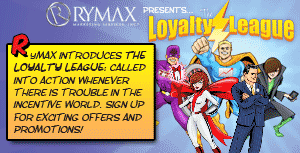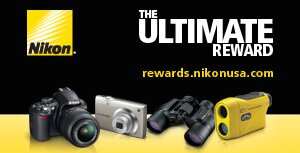What Does It Take to Engage Employees?
By Paul Kiewiet, President, BrandKiwi, LLC
Everyone seems to agree that disengaged employees cost enterprises billions of dollars in lost profits, sales, market share and opportunity. The Gallup Organization has placed the cost of disengaged employees to the US economy at $350 billion per year (or nearly half of a TARP bailout).
Recent studies have shown a clear link between strong engagement strategies and strong financial performance. The need for value-driven, authentic and meaningful organizations – organizations that drive their mission consistently through all layers and performance functions to provide joyous brand experiences for their consumers – has been clearly identified.
It was announced long ago that the Industrial Age was over and Long Live the Service Economy or the Experience Economy or the Thank-You Economy or whatever you choose to call it. This 7.0 seismic shift has rocked the business world and changed everything. Behold! We are people of conscience, living consciously, doing good by doing good!
Or are we?
What’s Up (And Down)?
A national unemployment rate that hovers around 10% during this recovery would seem to indicate that Industrial Era management tactics are alive and well. Actually, the employment rate of the U.S. population is just over 58%. In previous recoveries, the unemployment rate dropped. In this one, it flattened. When the economy slowed, most companies responded they way they always have: cutting salaries, benefits and people.
Do these Industrial Age tactics work? Well, productivity is up because fewer workers are forced to get more done. Profits are up, not because of increased demand, but because productivity is up and worker costs are down. One of the saddest indicators of the seeming success of this tactic? The CEOs who laid off the most employees earned 42% more than their peers who didn’t wield the hatchet.
But the real costs of Industrial Age tactics are yet to come due. Employees are stressed and stretched to the limit. They live with constant fear of job loss, pay cuts and benefit cuts. They lose best friends and co-workers to layoffs. They worry about their spouse’s job security. They feel stuck – what experts call “job-lock” – as there are no promotions, no room to grow, no new opportunities with other employers, and the prospect of losing their healthcare and retirement benefits in this environment is too scary to contemplate. This, in turn, creates an uninspired atmosphere with actively disengaged, disgruntled and unhappy employees.
What Does It Look Like?
In contrast to Industrial Age tactics, what does successful employee engagement look like? Here are a few key characteristics:
Shared Values. Successful organizations create a sense of mission that employees recognize as aligned with their own personal values. This creates a sense of meaning and purpose that extends beyond working for a living and touches on working for a life.
Professional Development and Personal Growth. Organizations that recognize the needs and desires of their people to learn new skills, take on new challenges and experience trust and value will be rewarded by employees who love their company and exude gratitude through their job performance. Employees value employers who value them and who design growth and development opportunities that benefit the employee first, even before the company.
Social Connectivity. The Gallup Organization has identified “Having a Best Friend at Work” as one of the attributes of a company that fosters engaged employees. Great enterprises go beyond that and create a sense of community. Workplace design, events that bring people together and open communication creates a special shared culture that fosters peak performance.
Personal Value. There’s little divide today between one’s work life and personal life. Many employees check their work email from home and on their phone at all hours of the day. People take work home and work at non-traditional times in non-traditional places. Great employers reciprocate by providing contributions to an employee’s non-work life and providing space and understanding at work to allow for a more balanced life.
What Employees Want
In short, employees want to be treated like human beings. Many people think engagement is just a new buzzword or management trend. The truth is, enterprise engagement is here to stay. Because it works.
So what do today’s employees want? Consider the following list:
- Full appreciation for work done
- Feeling “in” on things
- Sympathetic help on personal problems
- Job security
- Good wages
- Interesting work
- Promotion/growth opportunities
- Personal loyalty to workers
- Good working conditions
- Tactful discipline
Sound like a typical post-Industrial Age wish list? Actually, this comes from a Foreman Facts survey that first came out in 1946 and was produced again by Lawrence Lindahl in Personnel magazine in 1949. It has been repeated over the years with similar results by Ken Kovach (1980); Valerie Wilson/Achievers International (1988); Bob Nelson/Blanchard Training & Development (1991); and Sheryl & Don Grimme/GHR Training Solutions (1997-2001).
The truth is, some things are just basic human values. When you connect people with their purpose, give them a sense of meaning and allow them to perform to their strengths, amazing prosperity is the result.
This requires a conscious effort on the part of the organization. You might even call it a strategy. A strategy of engagement.
Paul Kiewiet MAS CPC, is the President of BrandKiwi,LLC, a professional development and personal growth consultancy based in Chicago, IL. He provides life, business and leadership coaching, as well as speaking, writing and consulting. For more information, go to @@http://www.create2bgreat.com or contact him at
Subscription Center
Subscribe to Engagement Strategies Magazine
Update Your Subscriptions



.jpg)


Comments
Show: Newest | Oldest
Post a Comment